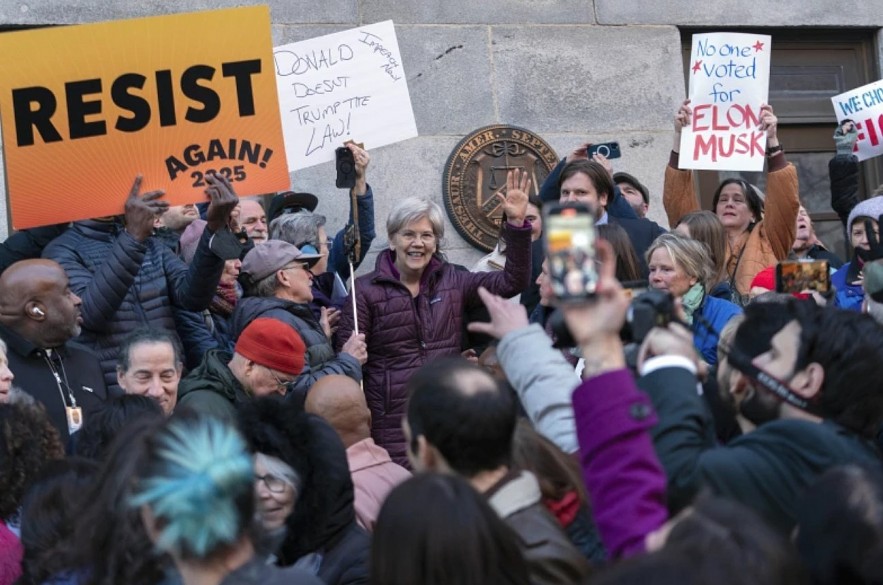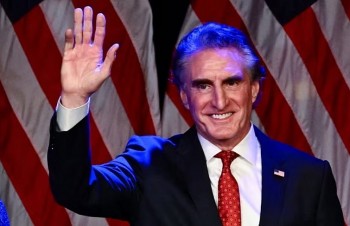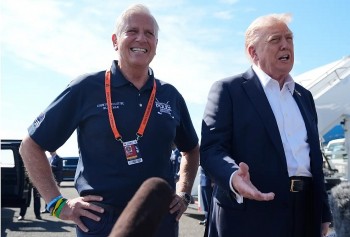How Many Federal Workers Will Accept Trump’s Resignation Offer
As the Trump administration seeks to reshape the federal workforce, a key question looms: How many employees will take the administration's Deferred Resignation offer?
With the deadline fast approaching, officials are closely monitoring participation in the voluntary resignation program, which offers eight months of salary and benefits to employees who choose to leave their jobs.
Learn more: How Many Employees Are in the Federal Workforce in the U.S?
Key Takeaways:• Current participation: 50,000 employees (2.5% of workforce) • Administration target: 5% to 10% (100,000 to 200,000 resignations) • Primary motivations: Reduce government size, replace bureaucrats • Employee concerns: Job security, service disruptions, rushed decision timeline • Legal challenges: Federal judge has paused the deadline • Expected outcome: Participation surge in final 24 hours, possible policy adjustments |
 |
| How many federal workers will resign? |
Current Numbers and White House Expectations
According to the latest data (Friday), approximately 50,000 federal workers—or 2.5% of the eligible workforce—have accepted the buyout package. While this figure is notable, it remains below the administration’s stated goal of 5% to 10% participation, which would equate to 100,000 to 200,000 resignations.
As of Thursday morning, about 40,000 workers had accepted the offer, accounting for 2% of the workforce. However, White House officials believe that the final 24 hours before the deadline will see a significant spike in participation as employees make last-minute decisions.
A White House spokesperson described the response as "rapidly growing" and expressed confidence that final numbers would move closer to their target range.
| On Thursday, a federal judge temporarily halted the Trump administration’s deadline for over 2 million federal employees to decide whether to resign or remain in their jobs, granting labor unions time to challenge the plan’s legality. U.S. District Judge George O'Toole in Boston issued a temporary restraining order and scheduled a hearing for Monday. White House press secretary Karoline Leavitt said the administration was grateful for the extension "so more federal workers who refuse to show up to the office can take the administration up on this very generous, once-in-a-lifetime offer.” |
The Motivation Behind the Offer
The Trump administration has been clear about its dual objectives: reducing the size of the federal government and replacing workers deemed resistant to its policies. The Deferred Resignation program is a key component of this broader effort to streamline government agencies and ensure that remaining personnel align with the administration’s priorities.
By encouraging voluntary departures, the administration aims to cut costs, increase efficiency, and, in some cases, replace career bureaucrats with individuals more loyal to Trump’s agenda. Critics argue that this approach risks gutting essential services and eliminating institutional knowledge that is crucial to the effective functioning of government.
Worker Reactions and Concerns
For many federal employees, the decision is not an easy one. While the offer of eight months’ pay and benefits is enticing, there are concerns about long-term job security, especially for those who may struggle to find comparable employment outside of government.
Employees in critical agencies such as the Department of Veterans Affairs and the Social Security Administration have expressed concerns about the impact of mass resignations on public services. "Losing thousands of experienced employees in such a short period could lead to delays in processing benefits and responding to citizens' needs," said one senior agency official.
Additionally, the rushed nature of the offer—announced via email with just over a week to decide—has caused confusion and anxiety among employees. Many initially questioned whether the email was legitimate or a phishing attempt. Federal employee unions have also raised alarms, arguing that workers are being pressured into making a life-changing decision with insufficient time and information.
Legal Challenges and Potential Delays
The program has also sparked legal battles, with federal employee unions filing lawsuits challenging its legality. A federal judge recently paused the resignation deadline while the courts review whether the administration has the authority to implement such a sweeping workforce reduction without congressional approval.
Legal experts suggest that the administration may face further hurdles if the courts rule against it. "If a judge finds that the program was implemented unlawfully, employees who have already resigned might have grounds to seek reinstatement or compensation beyond the eight-month severance," said a government employment law attorney.
Will the Administration Reach Its Target?
Despite the controversy, the administration remains confident that the number of acceptances will continue to rise. Historically, government buyout programs tend to see a surge in participation in the final days before a deadline as employees weigh their options and make last-minute decisions.
If the administration falls short of its 5% to 10% target, it may consider extending the deadline or modifying the program to encourage additional resignations. However, any adjustments will likely face scrutiny from Congress, unions, and watchdog organizations.
Potential Impacts on Government Operations
Regardless of whether the administration reaches its goal, the departure of tens of thousands of federal employees will have significant consequences. Some agencies may experience staffing shortages, leading to backlogs and delays in key services. Others may find it difficult to quickly replace departing employees, particularly those in specialized roles requiring extensive training.
Experts warn that losing a large portion of the workforce in a short timeframe could have long-term implications for government efficiency. "When experienced employees leave en masse, it creates a knowledge gap that takes years to recover from," said a former senior federal official. "It’s not just about numbers—it’s about losing people who understand the intricacies of government operations."
Conclusion
With the deadline approaching, all eyes are on the final participation numbers for the Deferred Resignation program. While 50,000 federal employees have already accepted the offer, the administration’s target remains ambitious. Whether the final count meets expectations or falls short, the program is certain to leave a lasting impact on the federal workforce, shaping the future of government operations under the Trump administration.
 Who is Lee Zeldin - EPA Chief? Military Service, Personal Life, Career, And Net Worth Who is Lee Zeldin - EPA Chief? Military Service, Personal Life, Career, And Net Worth President-elect Donald Trump has tapped former Rep. Lee Zeldin to lead the Environmental Protection Agency. This article delves into Zeldin’s background, career, personal life, and ... |
 Who is Self-Made Billionaire Doug Burguum (Interior Secretary): Personal Life, Education, Career, And Net Worth Who is Self-Made Billionaire Doug Burguum (Interior Secretary): Personal Life, Education, Career, And Net Worth Doug Burgum, a self-made billionaire, former tech entrepreneur, and North Dakota governor, will balance energy development, conservation, and public land management for the nation's future ... |
 Donald Trump's New Education Policies: Backing School Choice and Empowering Parents Donald Trump's New Education Policies: Backing School Choice and Empowering Parents President Donald Trump signed a sweeping executive order aimed at expanding school choice and strengthening parents' role in their children’s education. |
 Nationalities Most Affected by Trump's Mass Deportations: Who Are the 11 Million Migrants? Nationalities Most Affected by Trump's Mass Deportations: Who Are the 11 Million Migrants? No complete list of those deported by nationality in 2025 has been made public by the U.S. government. However, according to estimates from the Pew ... |
























